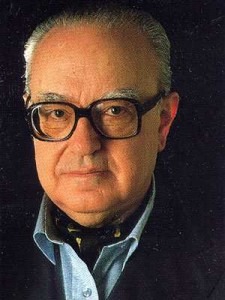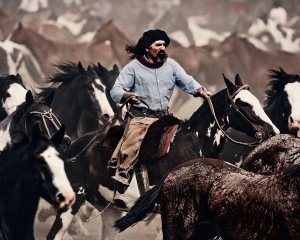
Alberto Ginastera
Ginastera’s work for orchestra, Ollantay, has been described as an ‘Argentinian Taras Bulba.’ Taras Bulba, an orchestral work by Czech composer Leoš Janáček, about the life of the Cossack of the same name and his two sons Andriy and Ostap. The Cossacks, as part of the Russian army, are at war with Poland. Father and his two sons are killed in the battles, but at the end, Taras, dying, calls to his men to continue the fight in the great Cossack spirit.
In Ollantay, a similar struggle occurs, but now between Ollantay, who commands the Sons of the Earth, and Inca, who commands the Sons of the Sun. Inca declares war on Ollantay for profaning the Temple of the Virgins in an attempt to rape Coyllur, the daughter of Inca.
The first movement conjures for the image of a lonely night on the pampas when Ollantay appears and the music changes to heroic (cue the trumpets!).
Ginastera: Ollantay: I. Paisaje de Ollantaytambo (Louisville Orchestra; Jorge Mester, cond.)

Modern gaucho at work (photo by Jimmy Nelson)
II. Los Guererros
Just as Taras Bulba closes with the death of the eponymous hero, so does Ollantay. In the third movement, Ollantay has been captured by Inca and he forecasts the ultimate fall of the Sons of the Sun, Inca’s followers. After Ollantay’s death, solitude returns. The music becomes anguished as Ollantay fights his captivity, and then calms, while still remaining ominous.
III. La Muerte de Ollantay
Ginastera was inspired by a dramatic poem of Incan origin contained within the narratives of Popul Vuh. Characters from Popul Vuh are found on Maya ceramics – The Maya period started around 2000 BC and ceased in the late 17th century. The Popul Vuh manuscript was written by a missionary in the early 18th century by a Dominican friar, Francisco Ximénez.
In his symphonic triptych, Ginastera has captured the sound of Argentina, but not the sound of the cities – it’s the sound of the countryside: the lonely pampas plains and the high Andes.


A “dramatic poem of Incan origin contained within the narratives of Popul Vuh”? The author obviously has a poor knowledge of Latin American culture. She should double check her sources. There’s no mention of any Inca poems in the Popol Vuh (yes, I’ve read it ), let alone of Ollantay. Ginastera was most probably inspired by the 18th century play by Antonio Valdés.
You’re absolutely right and my apologies for the error. Ginastera wrote another work based on Popul Vuh, and I had conflated information about the two works.